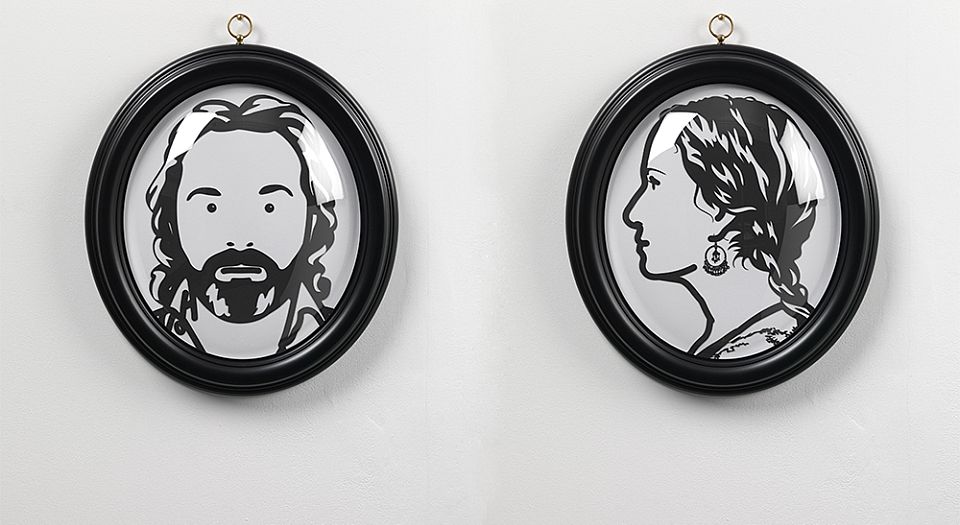When artists become estranged from art history
Portraiture doesn't work when it's so self-consciously intellectual.

With its slightly portentous title, Facing History: Contemporary Portraiture, a new eclectic display of prints and photographs from the Victoria and Albert Museum’s collection (in two small rooms deep in the recesses of the museum) reflects contemporary artists’ strained relationship with art history. A pair of portraits by Grayson Perry – of ‘Mr and Mrs Perry’ – gently mocks American naive portraiture of the nineteenth century. In his signature graphic style, Julian Opie offers bland portraits of a couple in the style of round miniatures (pictured), popular in the seventeenth and eighteenth centuries. Gavin Turk’s photographic self-portrait is disturbingly like a death mask.
Other portraits subvert the traditional function of portraits to celebrate and memorialise the great, the good, the powerful and the prosperous. Tom Hunter’s richly coloured photograph of a squatter and her baby references Vermeer’s portrait ‘Girl Reading a Letter at an Open Window’. This girl, we are told, is reading a possession order. She looks like a homeless Madonna, with the light shining on her and her baby.
The most recent acquisition – a series of 34 almost identical miniatures by Bettina von Zwehl – features a V&A visitor-services assistant in profile, posed in the style of eighteenth-century silhouettes popular with the nobility. Gemma Anderson contributes a pair of delicate etchings from her patient-and-psychiatrist series of portraits, symbolically representing their contrasting inner lives, in the tradition of portraits being accompanied by symbols of the sitter’s profession or status.
Some of the portraits are literally effaced – almost anti-portraits – such as Brian D Cohen’s obscured ‘Man with Eyes Closed (Walter White)’, Cecilia Mandrile’s blurry ‘ID-Intensively Displaced’ and Lynette Yiadom-Boakye’s etching ‘Siskin’, of a non-existent black man named after a bird.
Since the late twentieth century, art history in art schools has taken a back seat to ‘critical studies’ with courses such as ‘Postcolonial Identities and Representation’ or ‘Art and the Everyday’. While contemporary artists may plunder the works of great artists such as Rembrandt and Vermeer, as a resource for their own work, they are keen to distance themselves from the historic role of art in reflecting and promoting the elite and Western culture.
This is a pity, because it seems to have a dampening effect on new art. These prints and photographs lack exuberance or excitement. There is something just too self-consciously intellectual about them; and they demand your sympathy for their subjects over and above your response to their qualities as works of art.
If you want to get excited by art, go find the fabulous fifteenth-century Devonshire Hunting Tapestries in Room 94, just a couple of rooms along from this exhibition (perhaps pausing, if you have time, to look at some lovely Constables and Turners).
Wendy Earle is convenor of the Institute of Ideas Arts and Society Forum.
Facing History: Contemporary Portraiture is at the V&A until 24 April 2016.
Picture by: V&A
To enquire about republishing spiked’s content, a right to reply or to request a correction, please contact the managing editor, Viv Regan.








Comments
Want to join the conversation?
Only spiked supporters and patrons, who donate regularly to us, can comment on our articles.